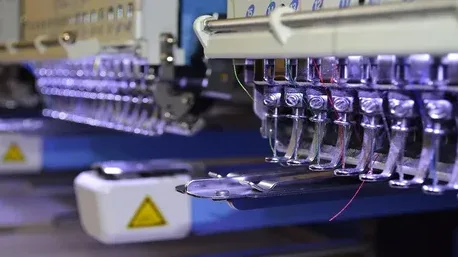Introduction: The Evolution of Embroidery Meets the Intelligence of AI
Embroidery, once rooted solely in handcraft tradition, has rapidly evolved with the advent of technology. From manual stitching to computerized embroidery machines, digitization has become the norm. But as artificial intelligence (AI) enters the arena, the world of embroidery digitizing is undergoing an even deeper transformation—one that blends art, code, and customization in ways never imagined.
In this article, we explore how neural networks and machine learning are enhancing embroidery digitizing, allowing brands, designers, and consumers to create highly personalized, intelligent textile designs.
What is Embroidery Digitizing? (A Quick Refresher)
Embroidery digitizing is the process of converting artwork, logos, or text into a stitch file that an embroidery machine can read. This involves mapping out the design’s stitches, sequence, direction, and type (satin, fill, running, etc.).
Traditionally, skilled digitizers manually plan this process using specialized software. However, as demands for speed and accuracy increase, so does the need for smarter automation.
Enter Neural Networks: The Brain Behind Smart Embroidery
Neural networks are a type of AI that mimics the human brain’s learning process. When applied to embroidery digitizing, these systems can analyze thousands of existing embroidery files, recognize patterns, optimize stitch paths, and even suggest design improvements based on data.
Key Benefits:
- Automated Stitch Mapping
- Improved Accuracy and Efficiency
- Real-Time Learning and Optimization
- Reduction in Manual Errors
Neural models can also adjust designs dynamically for different fabrics, making embroidery more adaptive than ever.
Personalization at Scale: AI’s Biggest Contribution
One of AI’s greatest strengths lies in its ability to personalize experiences at scale. In embroidery digitizing, this means:
- Creating designs tailored to user preferences (colors, fonts, motifs)
- Analyzing trends in customer choices
- Offering intelligent suggestions for patches, monograms, or emblems
For example, imagine an embroidery platform that learns your style and recommends personalized digitized designs in real time—AI makes that possible.
Use Cases: Who Benefits from AI in Embroidery Digitizing?
- Small Businesses: They get faster turnarounds and consistent quality without hiring full-time digitizers.
- Apparel Brands: They achieve on-demand personalization, boosting customer satisfaction.
- Freelancers/Designers: They enjoy smarter tools that reduce repetitive tasks and free up time for creativity.
- Embroidery Studios: AI-powered bulk processing of large orders with design consistency.
AI-Powered Embroidery Software: What to Look For
When choosing software that includes AI features for embroidery digitizing, consider:
- Pattern Recognition Accuracy
- Fabric-Adaptive Stitching Algorithms
- Cloud-Based Learning & Updates
- Batch Processing Capabilities
- User-Style Learning Engines
Top-tier platforms are already experimenting with GPT-based text-to-design generation, where a user types “a floral pattern with butterfly wings” and the software not only creates the graphic but digitizes it instantly.
Challenges in AI Embroidery Digitizing
AI still faces limitations:
- Lack of contextual design judgment (artistic vision vs. mechanical optimization)
- Difficulty recognizing low-res or complex images
- Hardware limitations for small embroidery machines
- Learning curve for end-users to train the AI properly
However, these challenges are gradually being overcome as AI models grow more sophisticated.
Future of Embroidery Digitizing: What Lies Ahead
Expect these futuristic upgrades:
- Voice-to-Design Embroidery: Describe your design, and AI digitizes it
- Augmented Reality Embroidery Planning: Visualize designs on garments before stitching
- Collaborative AI Design Assistants: Real-time co-creation with your software
- Biometric Input Personalization: Designs based on user mood, heart rate, or behavior patterns
The fusion of AI and textile art is creating not just smarter embroidery—but expressive, living design.
Conclusion: Smart Stitching Is Here to Stay
AI isn’t replacing the art of embroidery; it’s enriching it. Through smarter algorithms, better personalization, and automated precision, embroidery digitizing is moving into a new era—one where every stitch tells a uniquely data-driven story.
Whether you’re a seasoned designer or a startup exploring custom textile branding, embracing AI in embroidery digitizing can set your work apart in a competitive, tech-savvy world.




